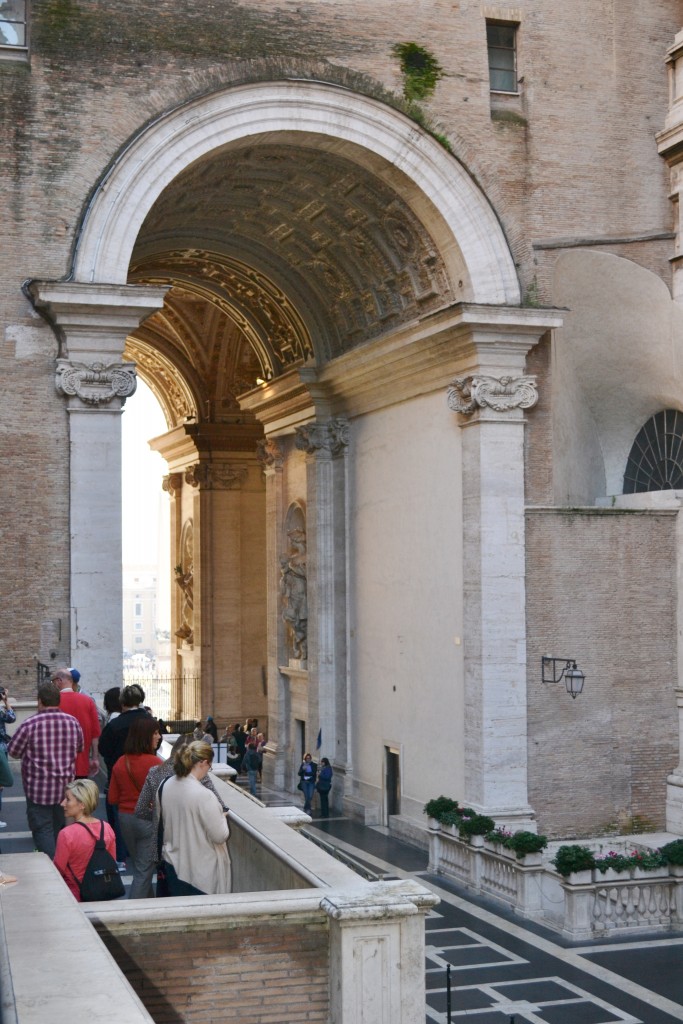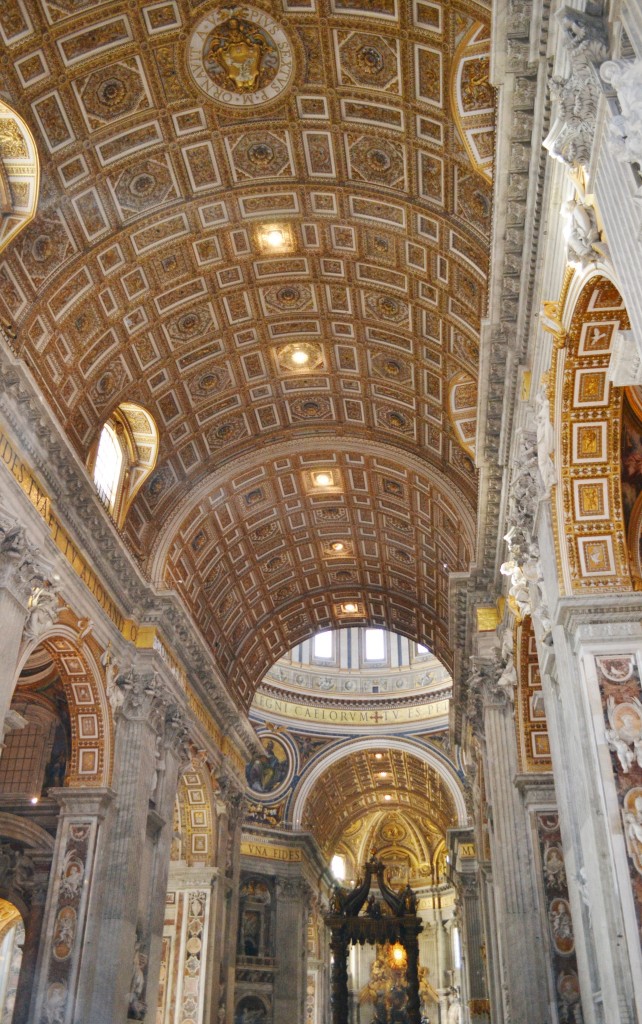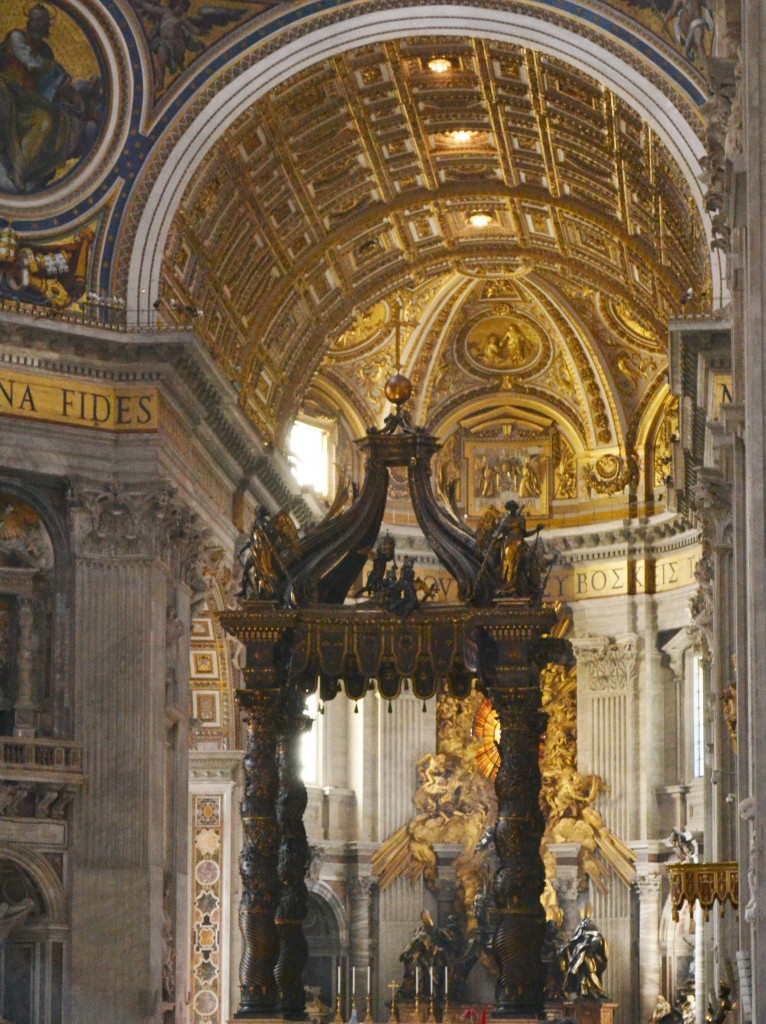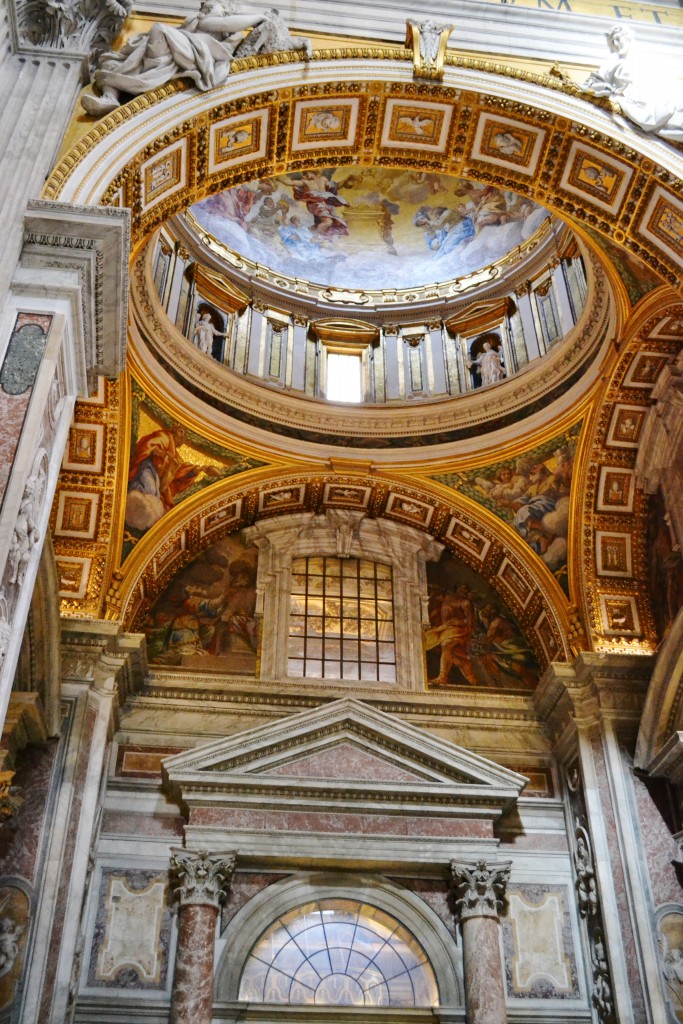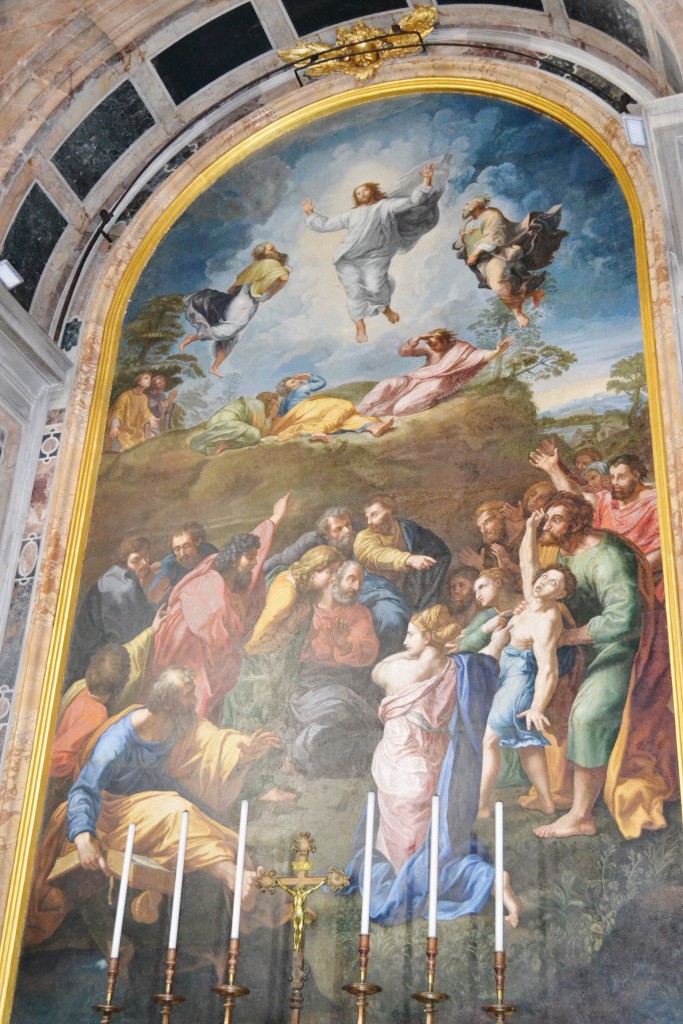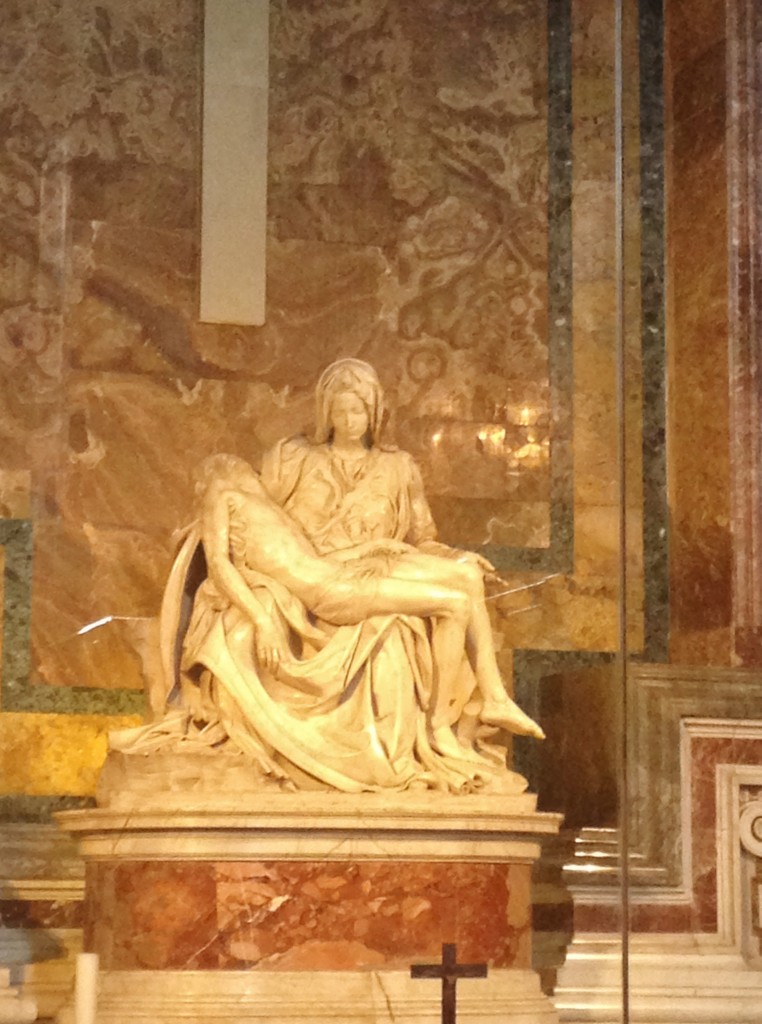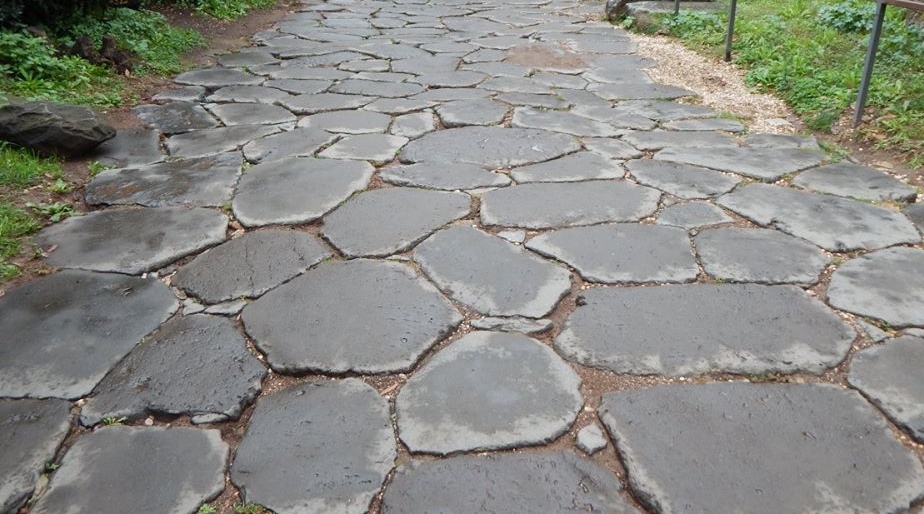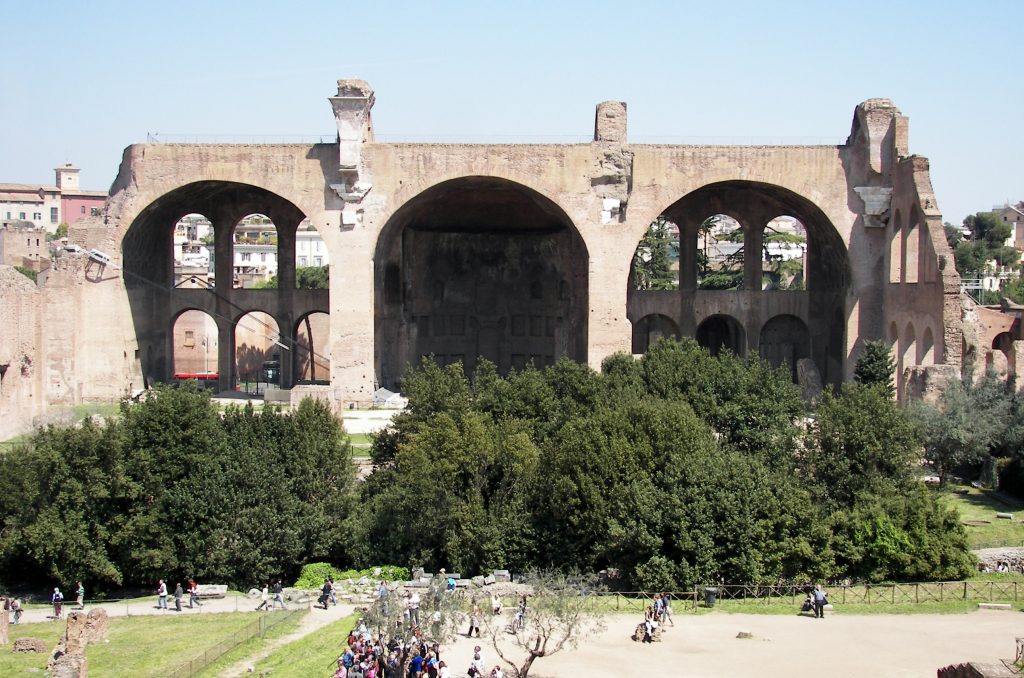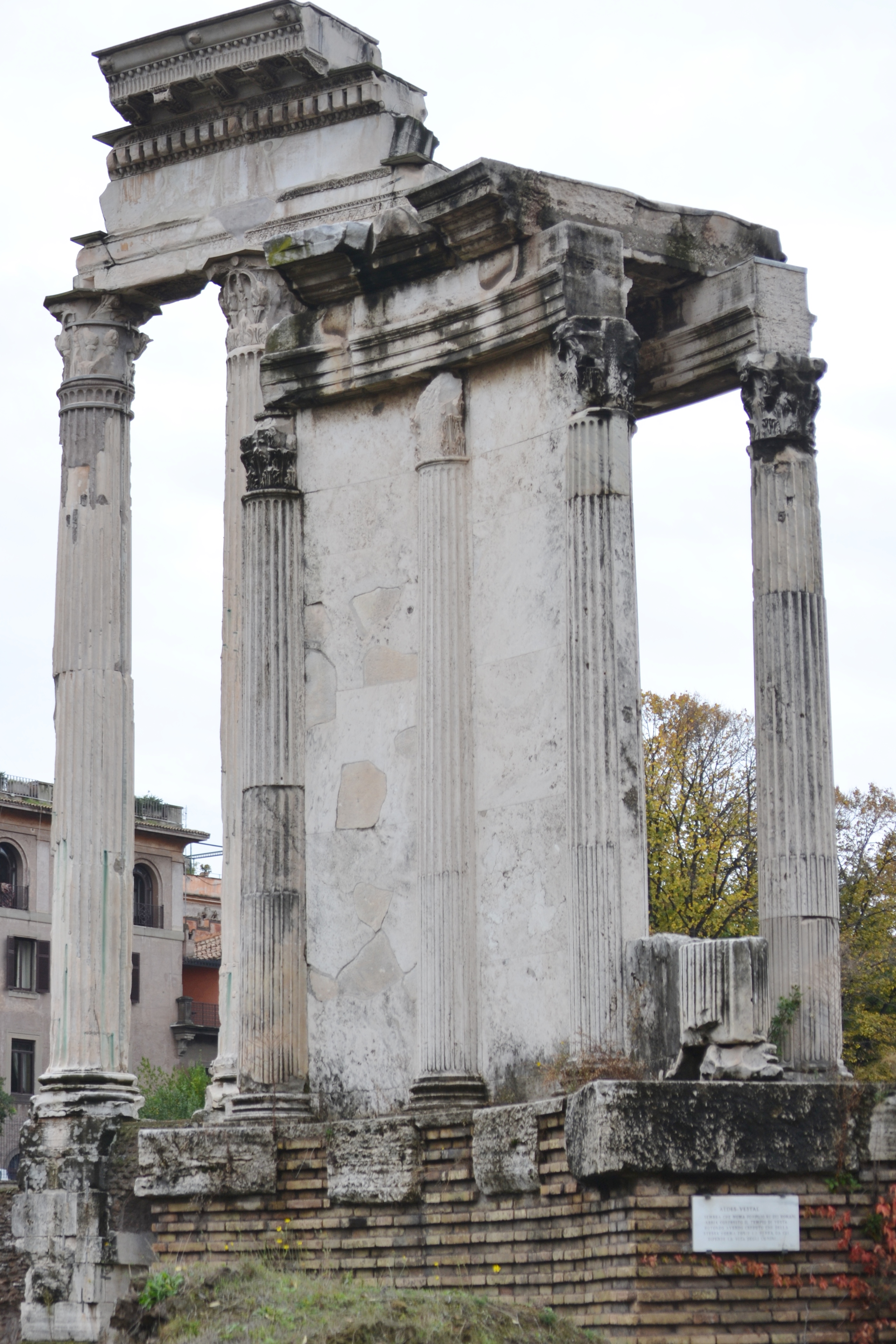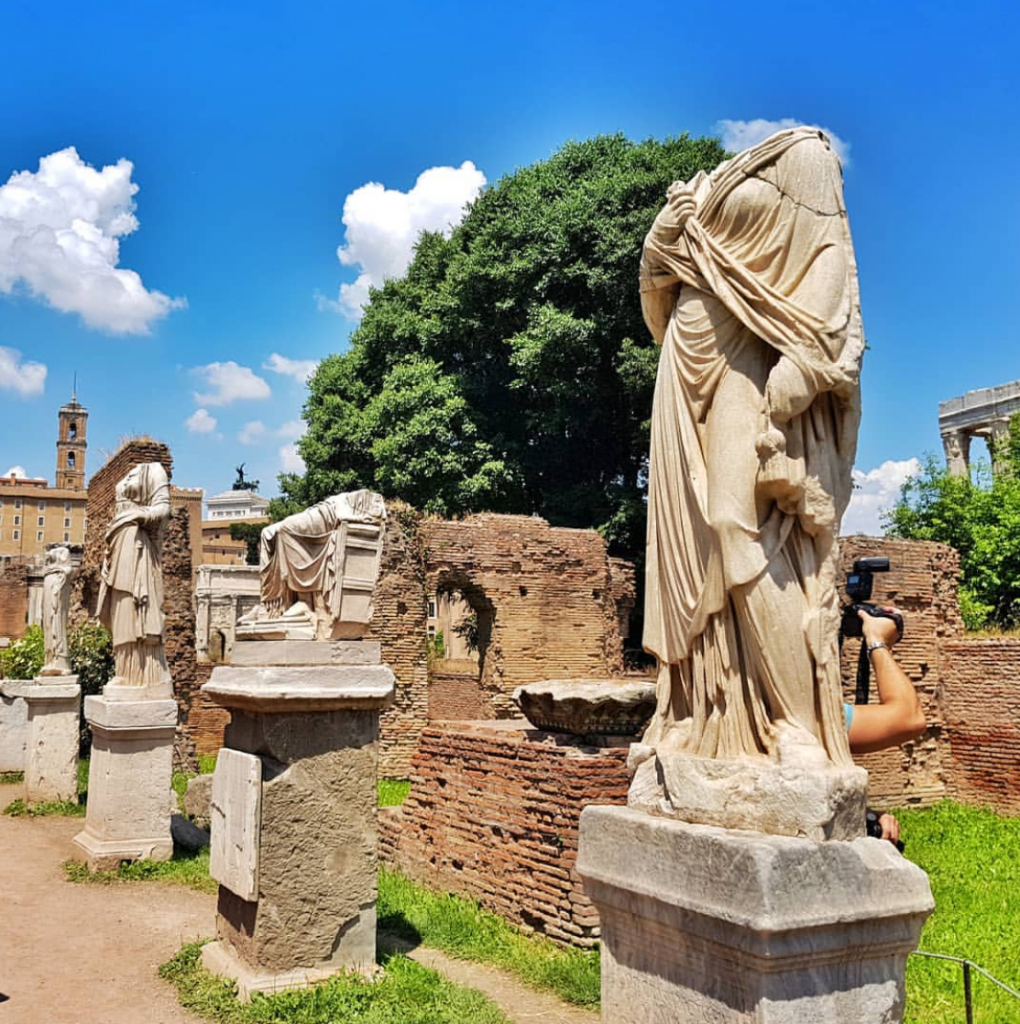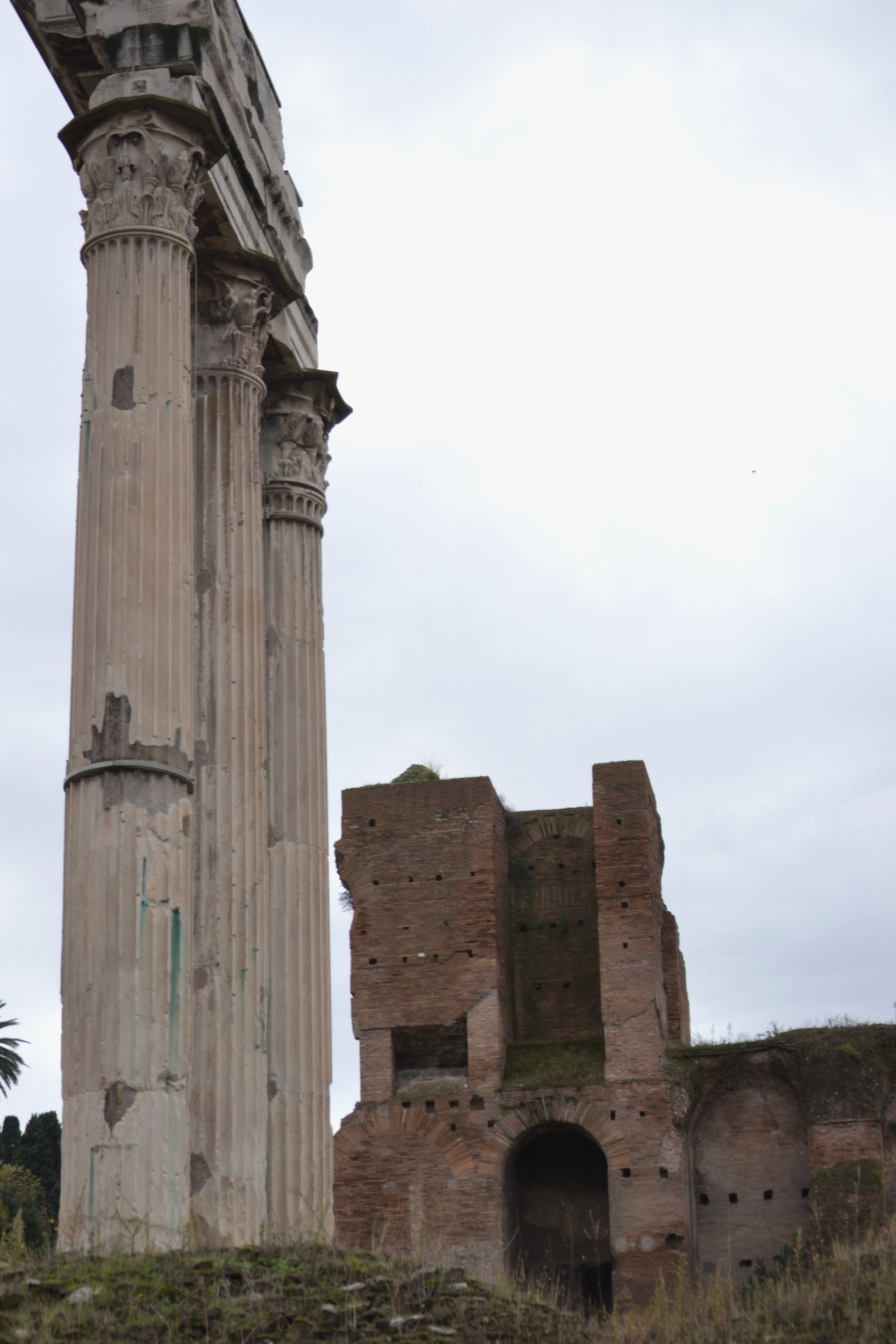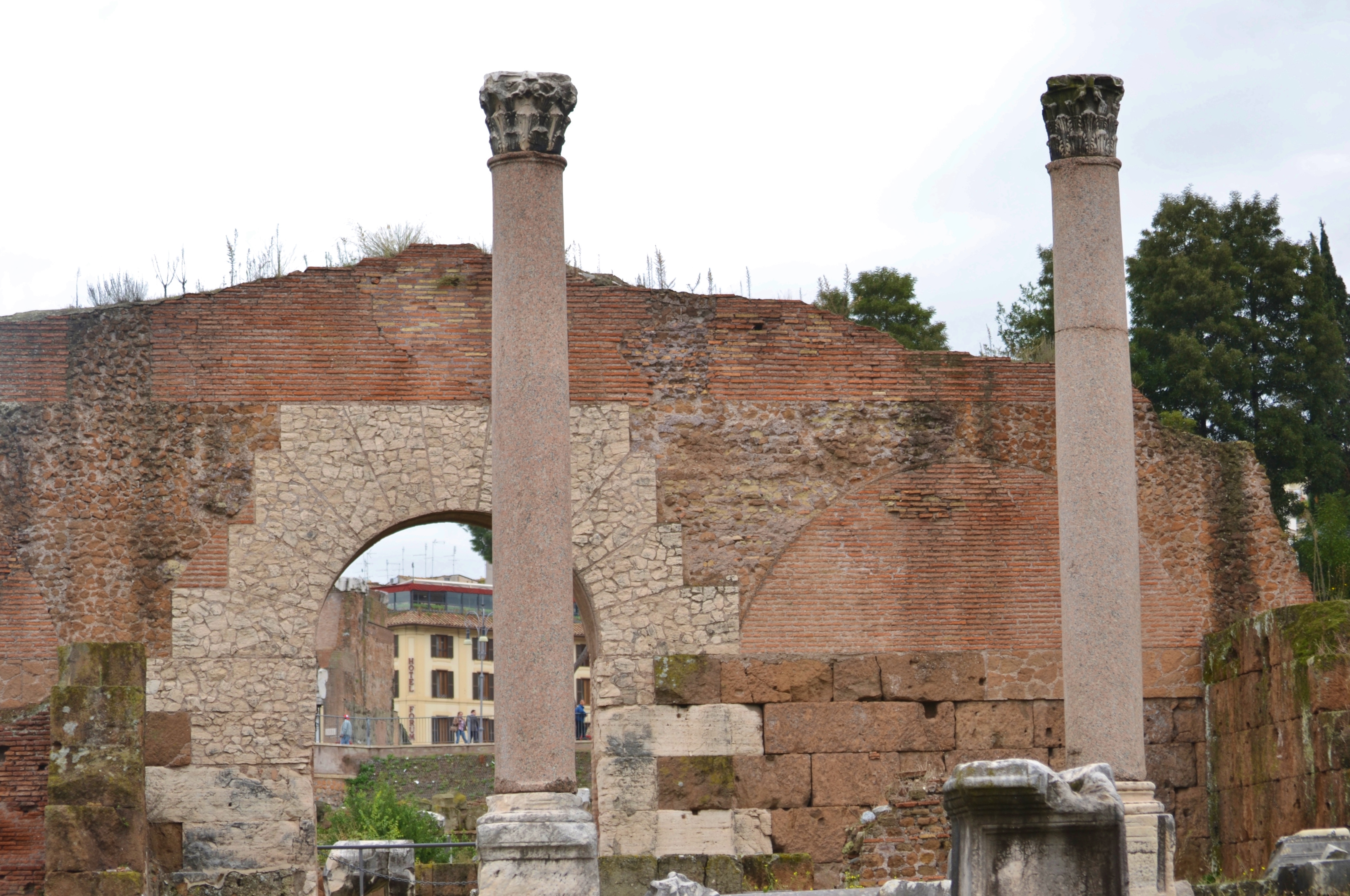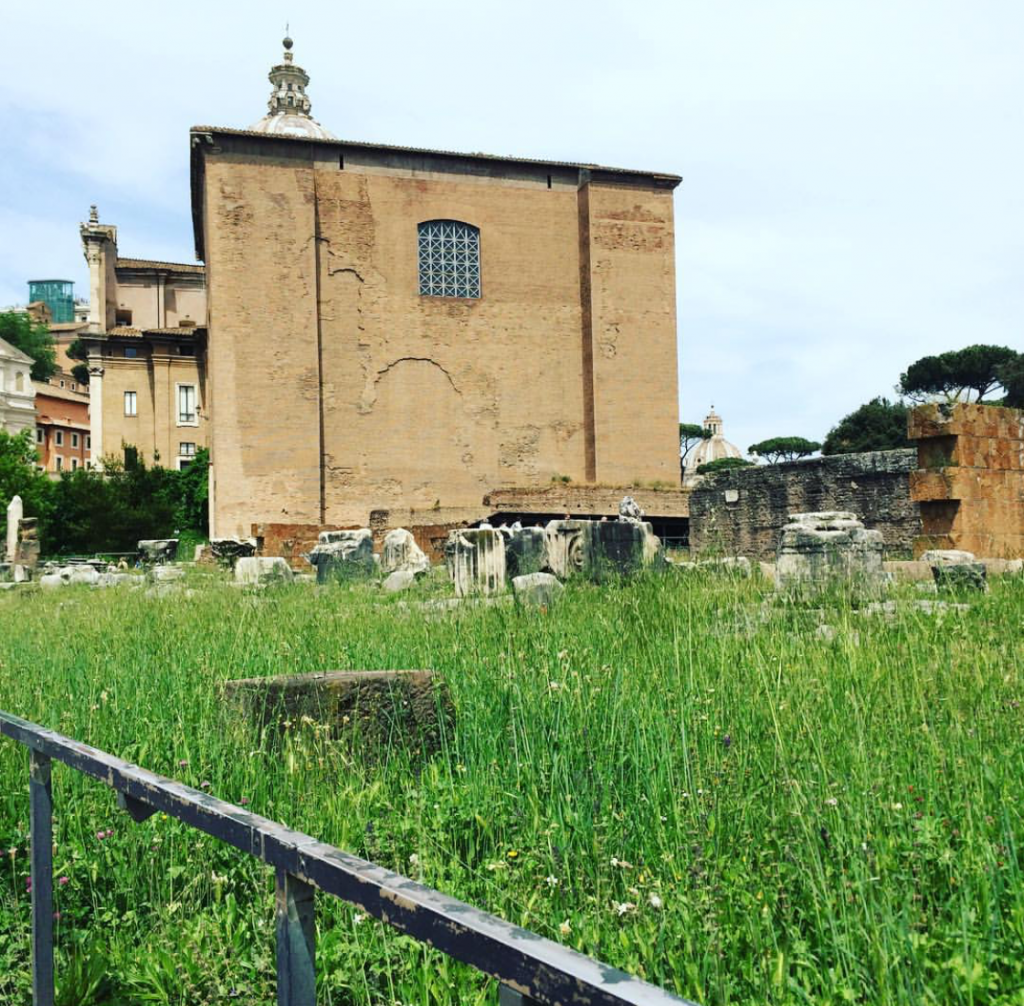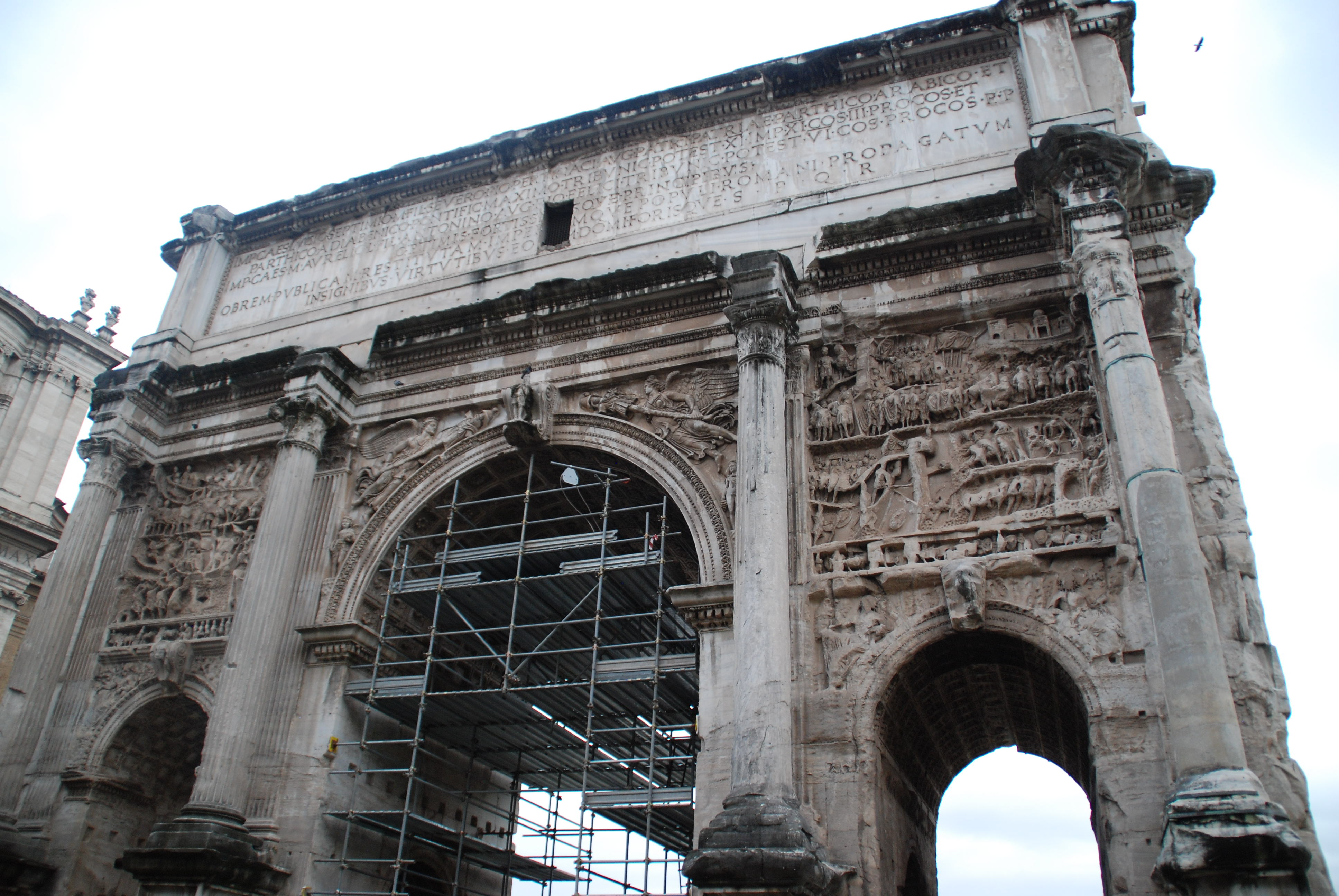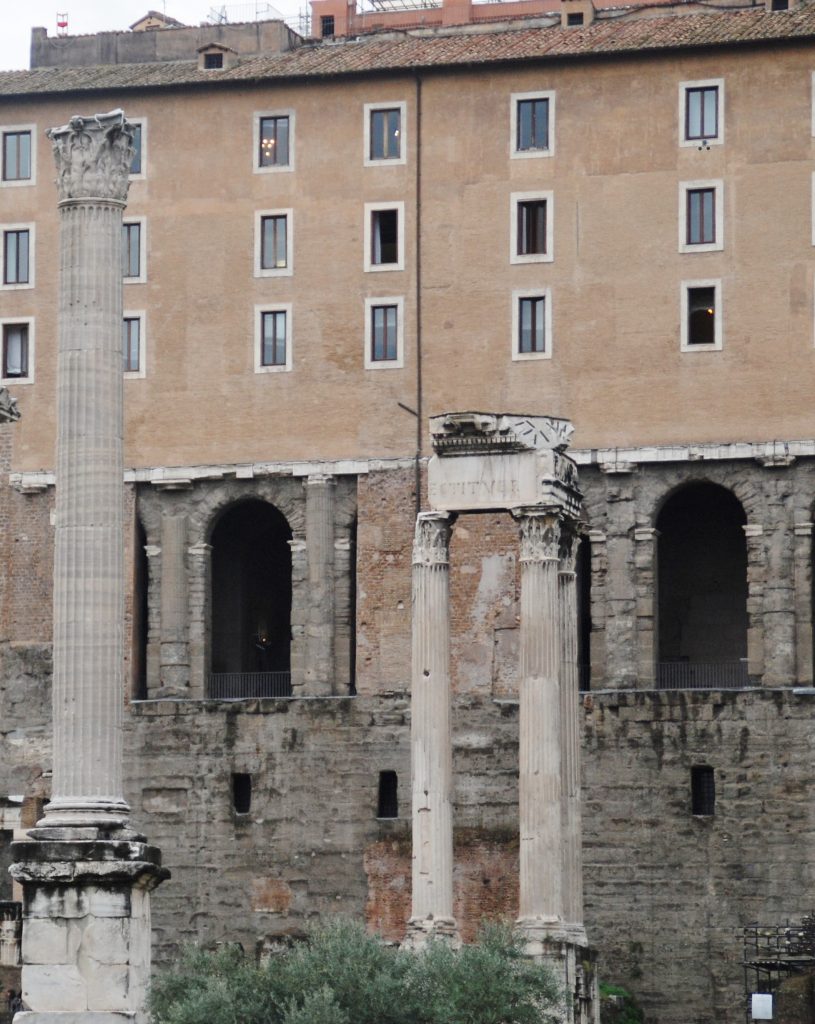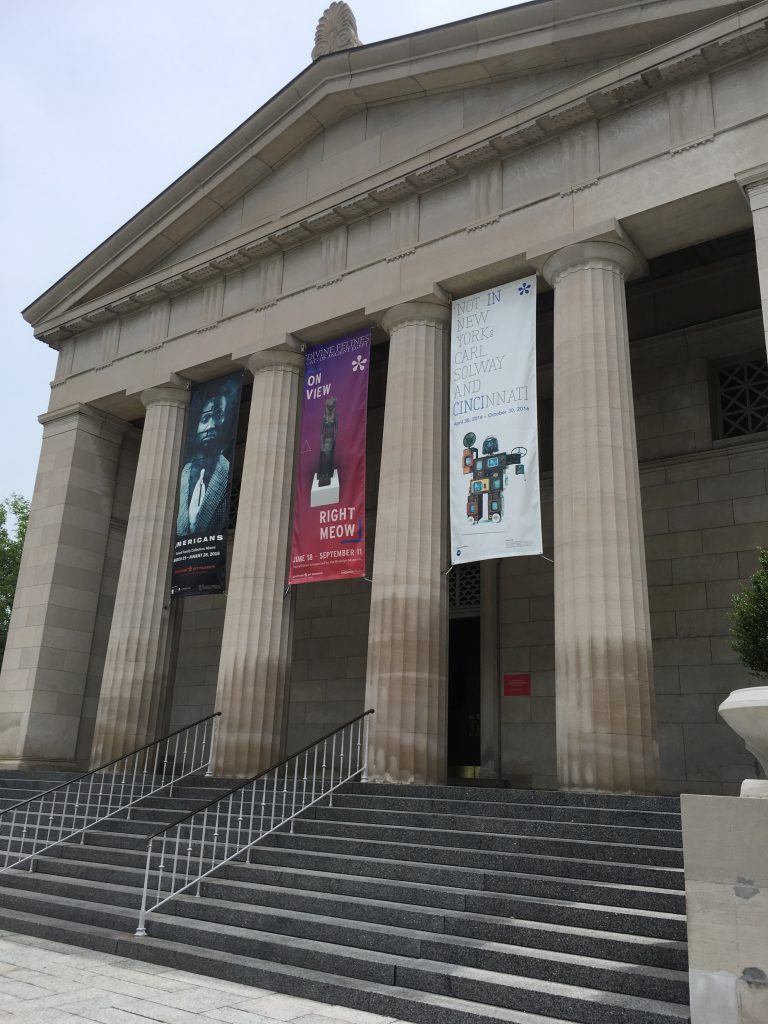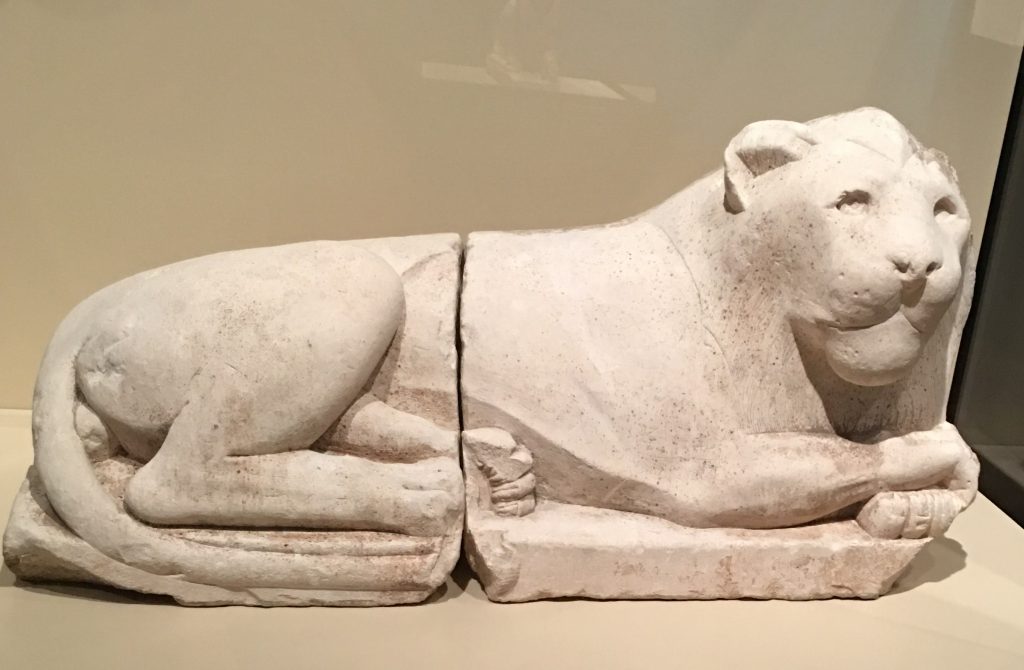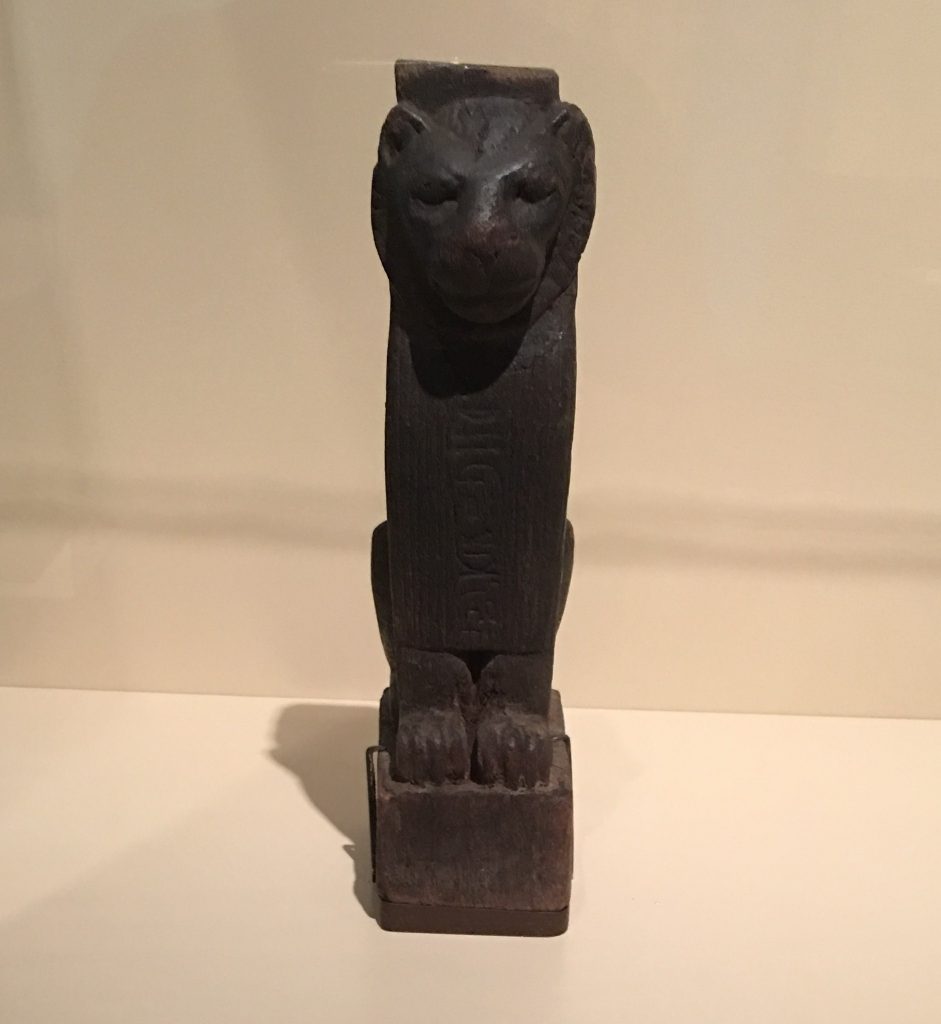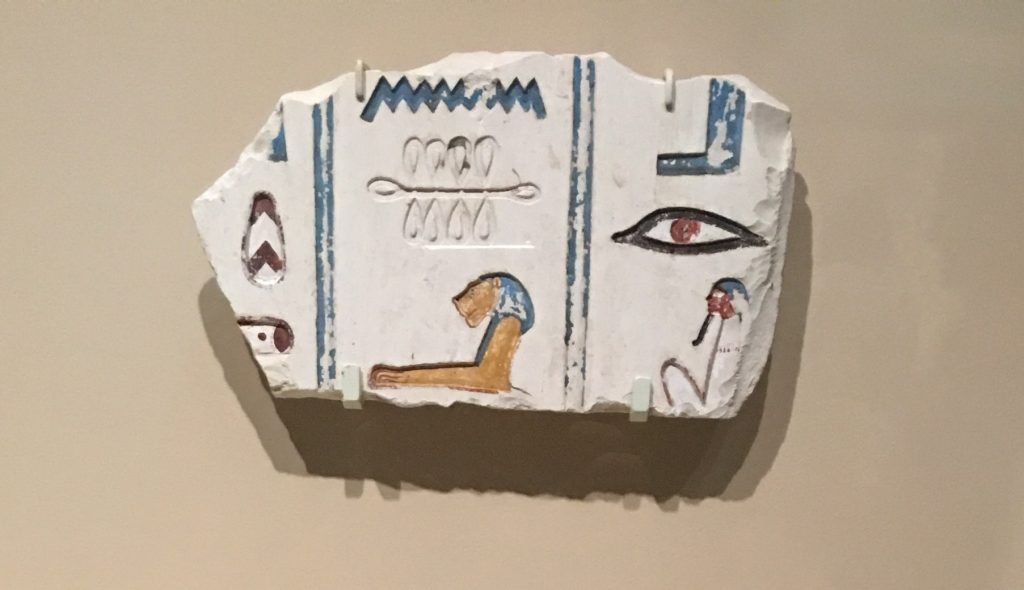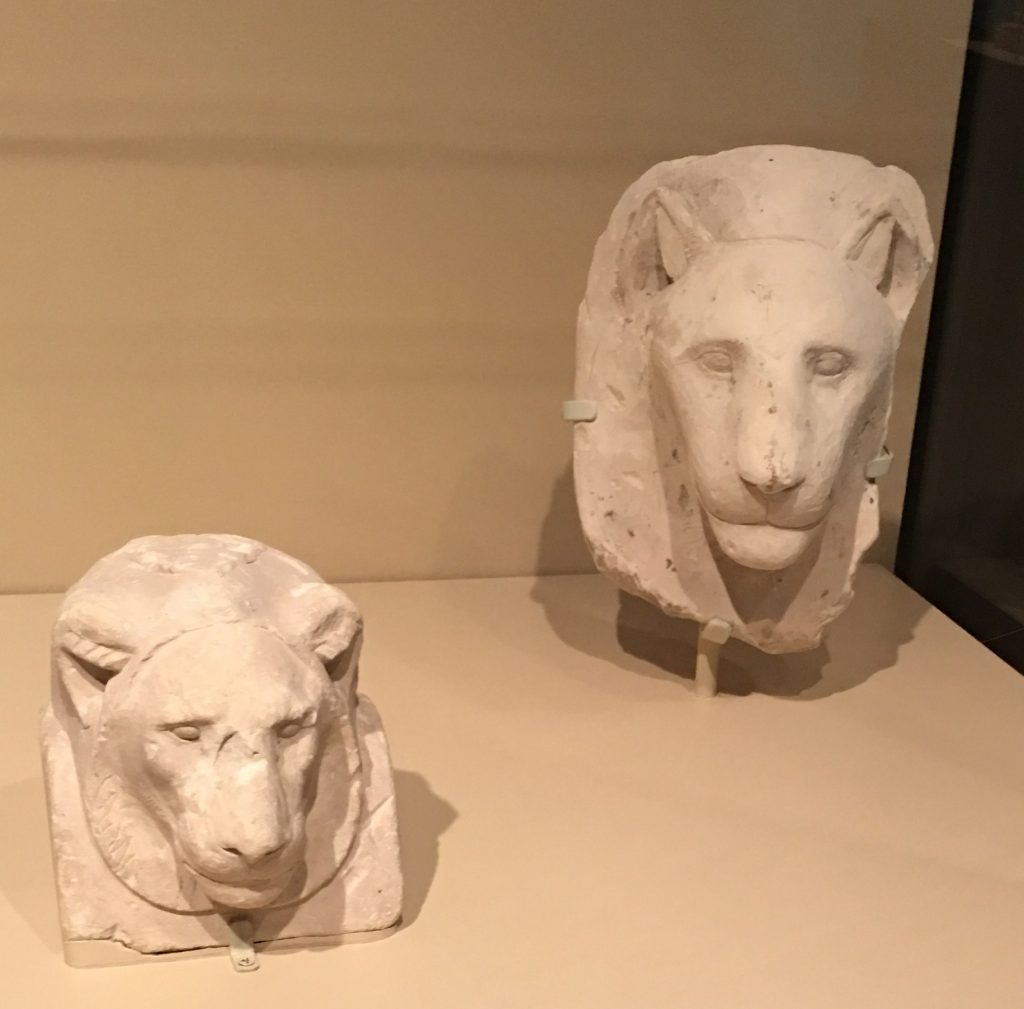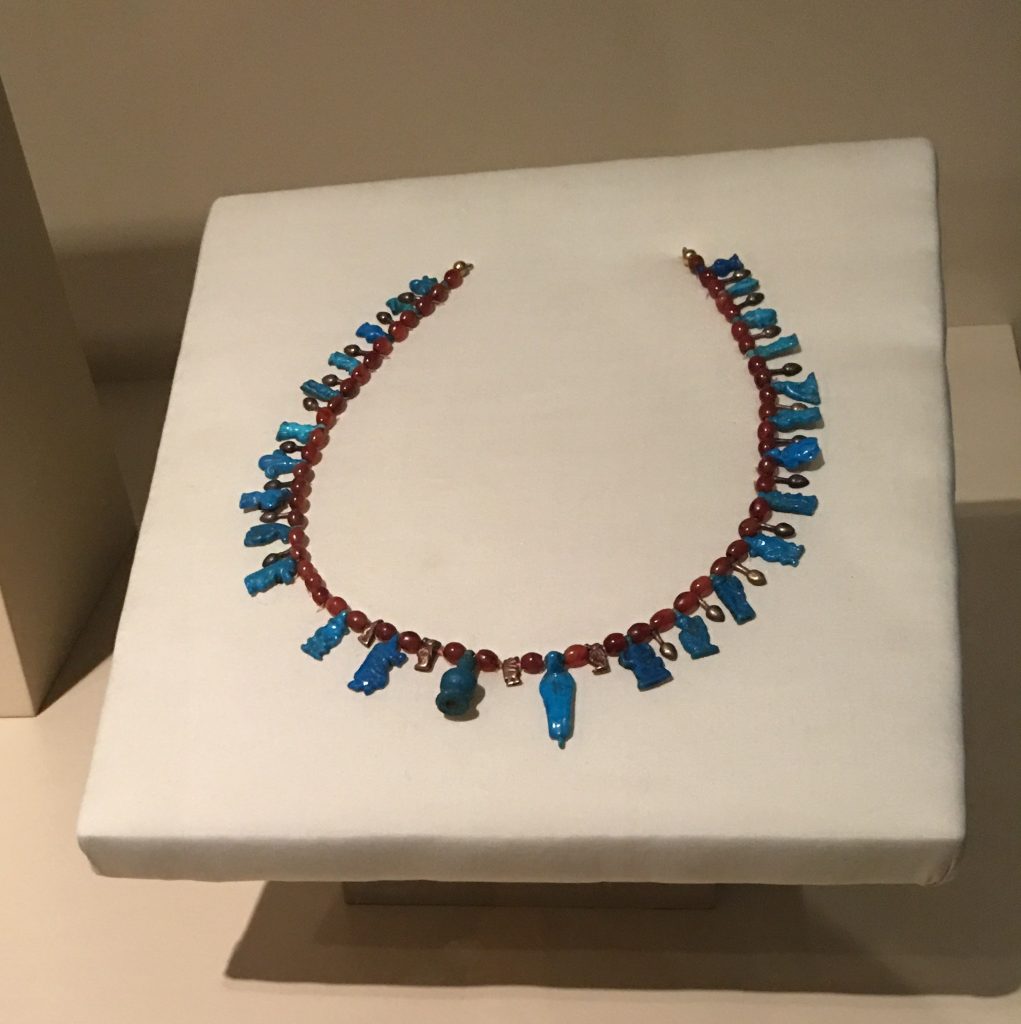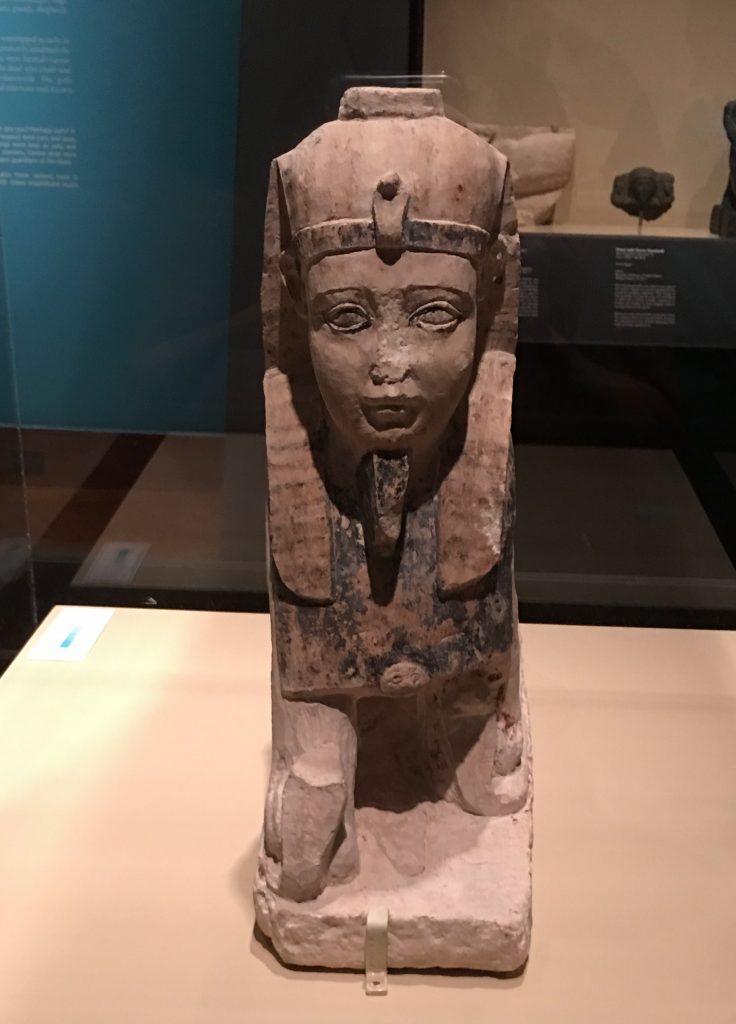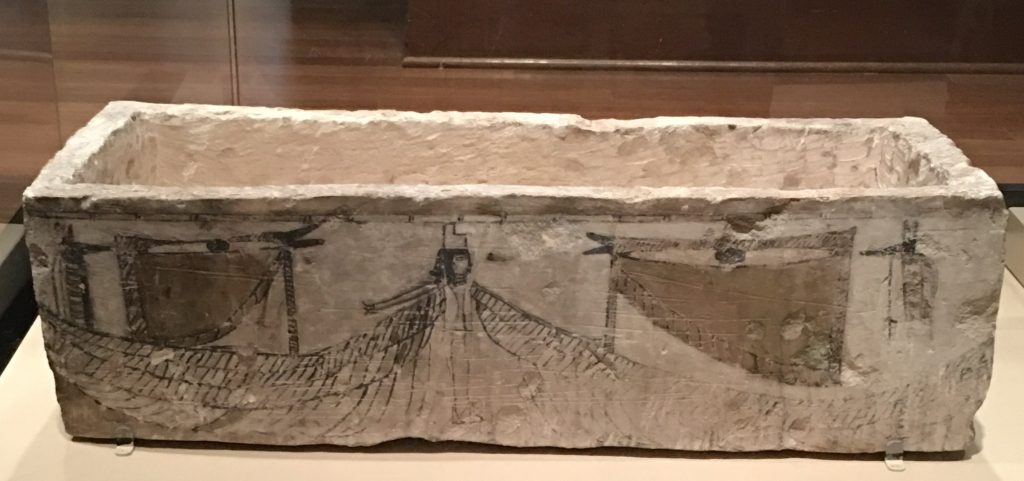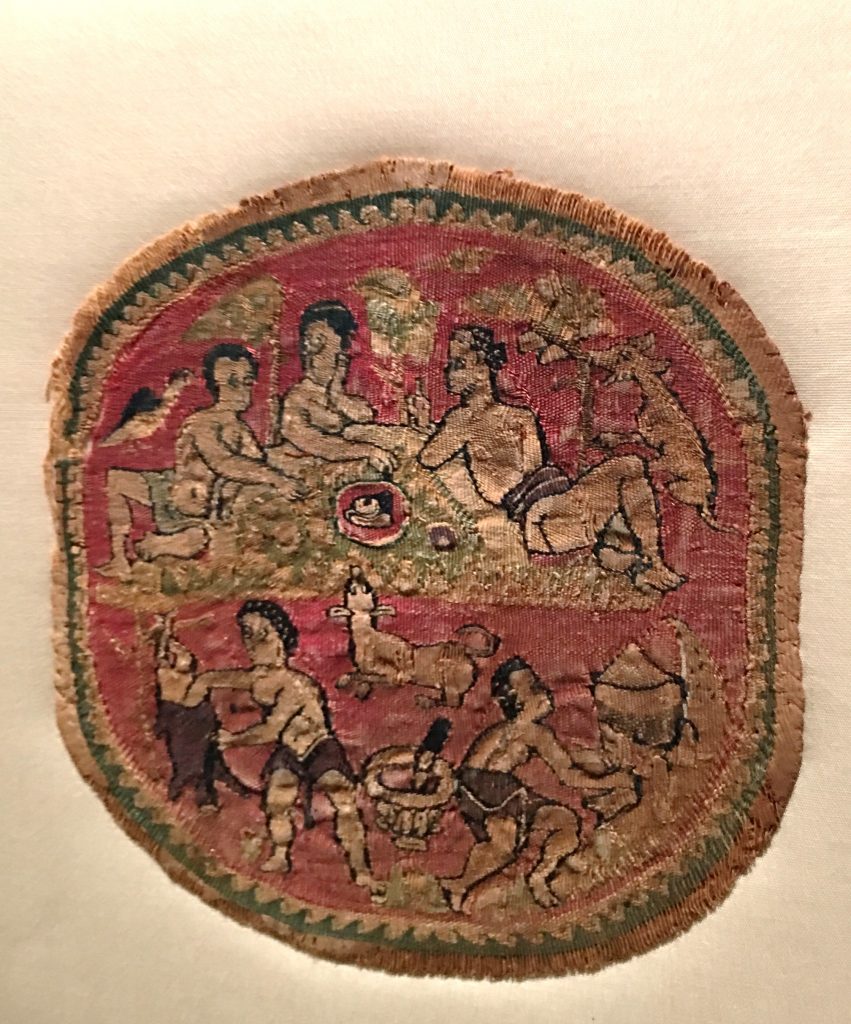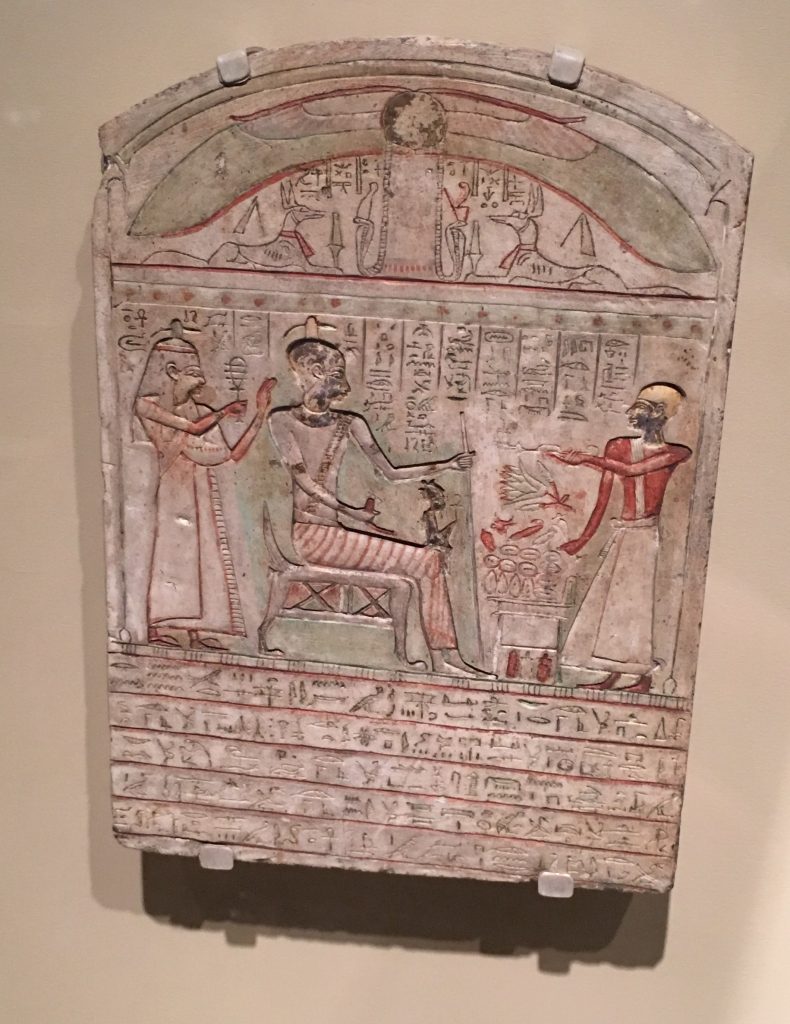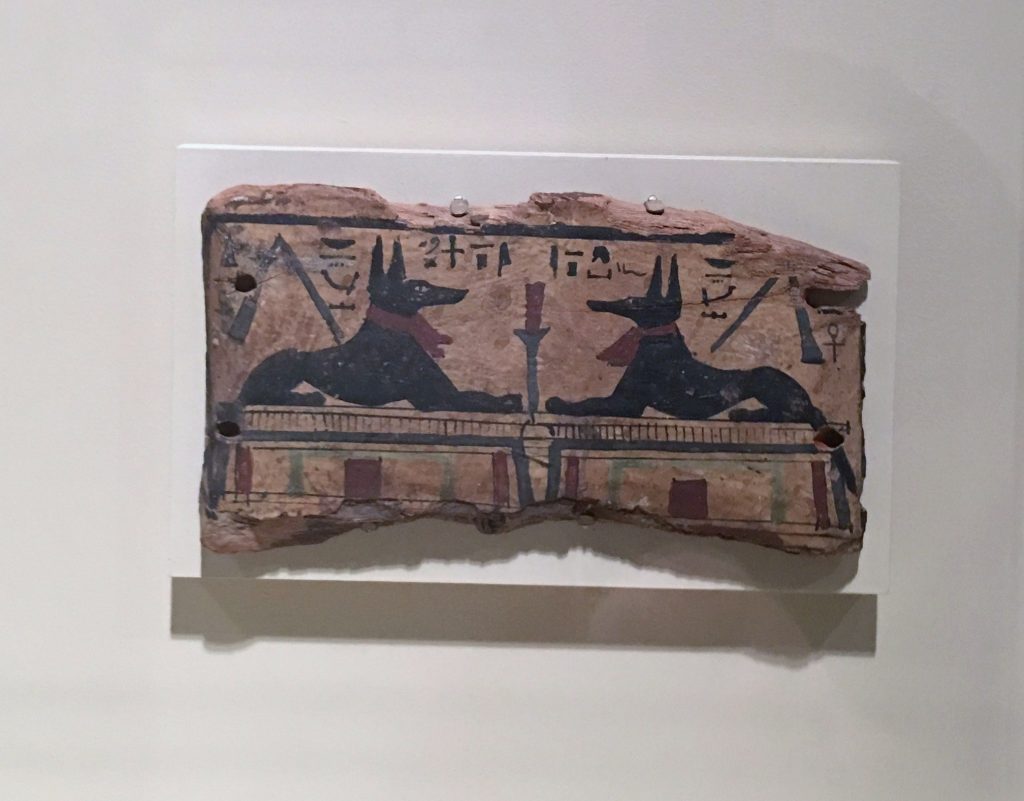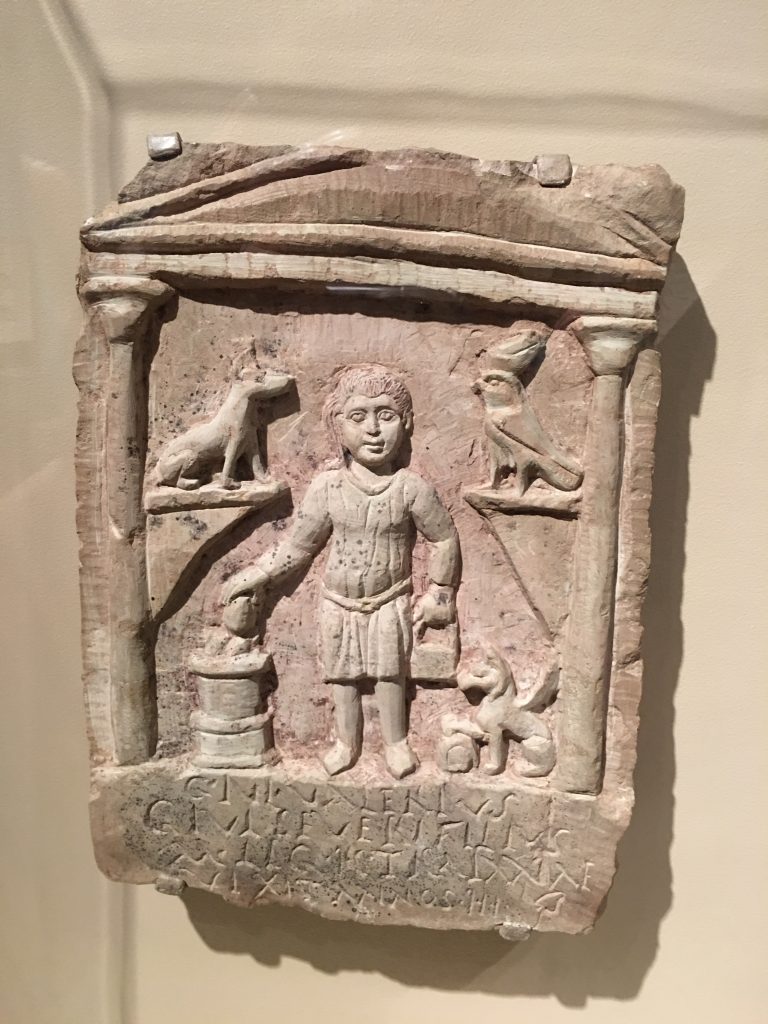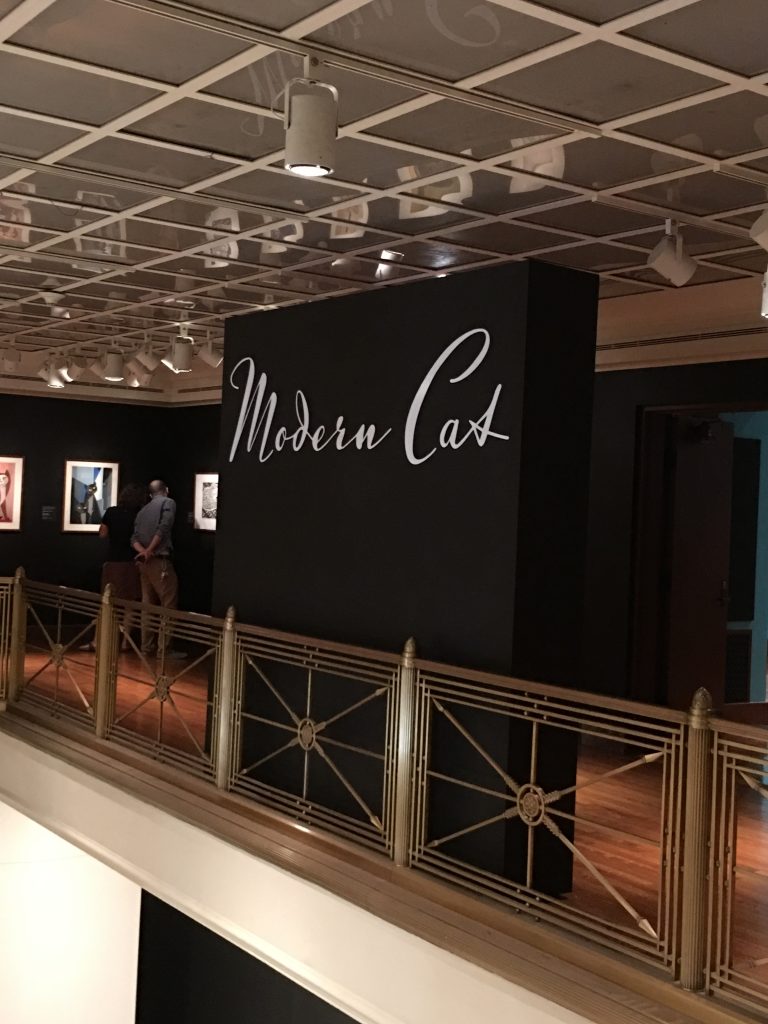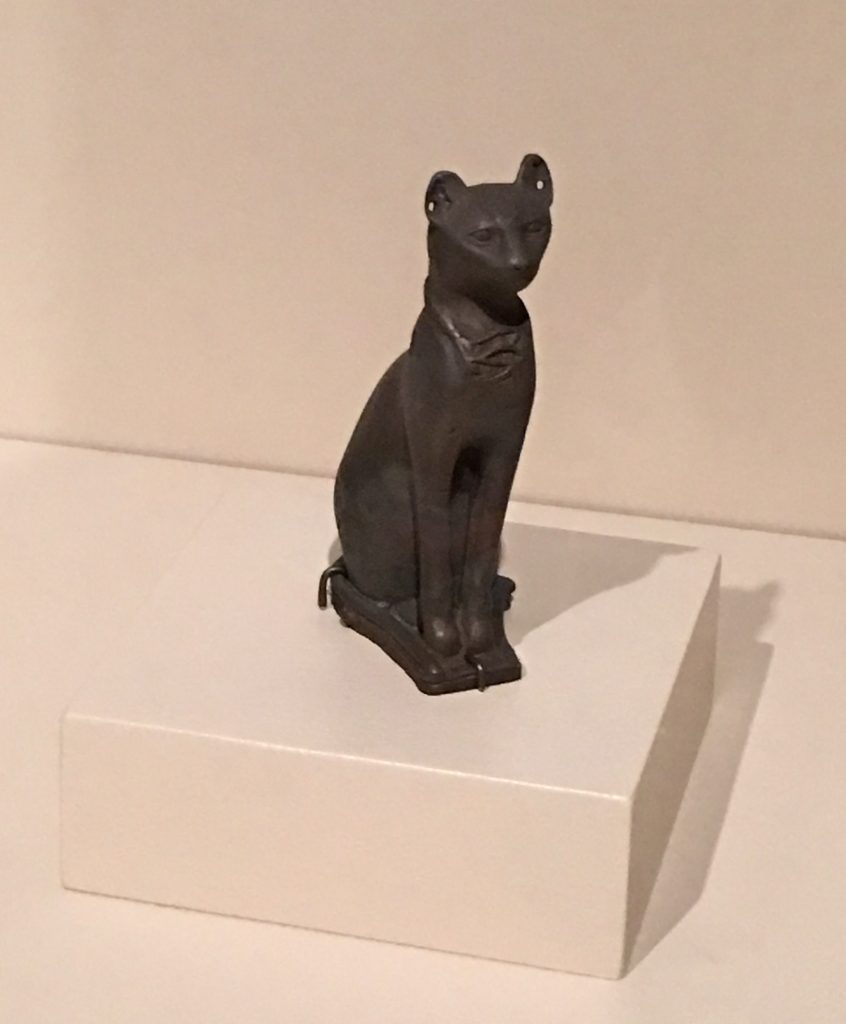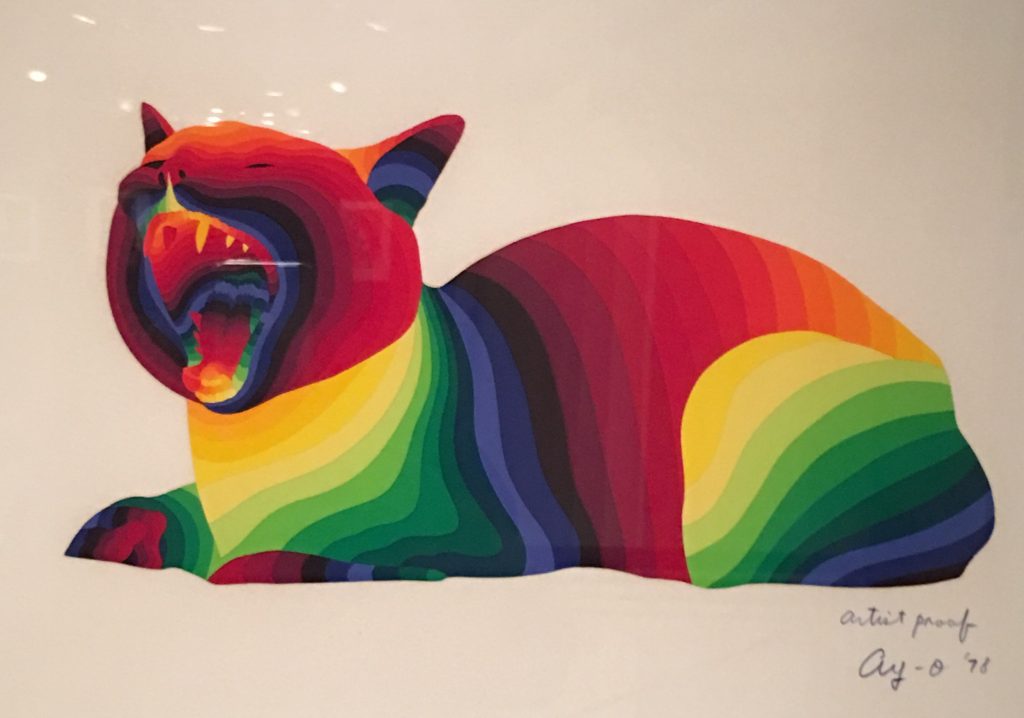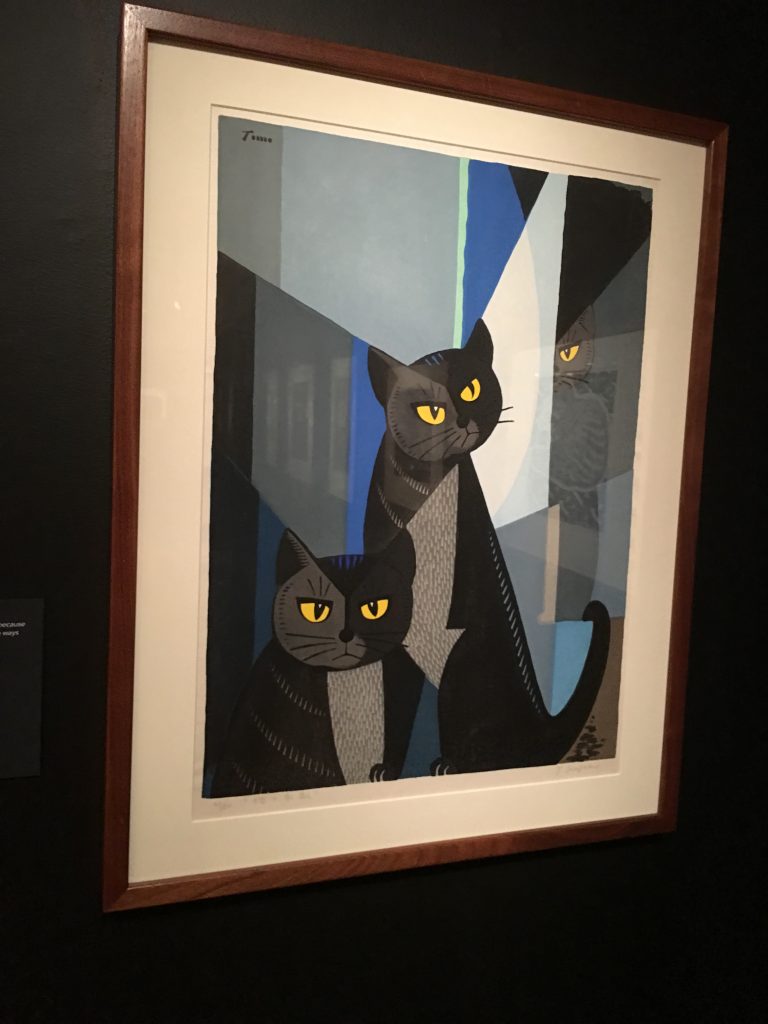A group of school children, dressed in navy uniforms, skipped ahead of us along the walkway which connects the Vatican Museum to St. Peter’s Basilica. Still in awe at the beauty of Michelangelo’s Sistine Chapel, I made my way towards the cathedral known for its architecture and artwork of famous Renaissance artists. While waiting at the entrance, I thought about how I had waited so many years to visit Rome and wondered if these youngsters had any idea how lucky they were for the opportunity to visit St. Peter’s Basilica at such a young age.
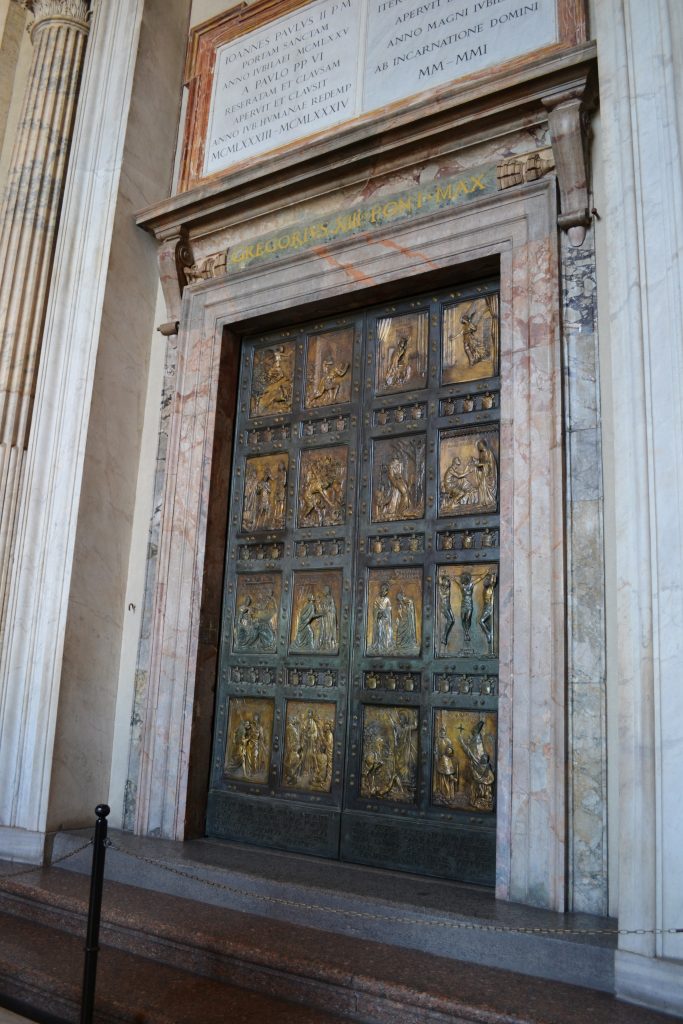
The Vatican City resides in the city of Rome, its own country with a post office, helipad and even its own currency with a portrait of the pope. It is the capital of over 1 billion Roman Catholics with the pope its ruler.
Shuttled along with fellow tourists towards the entrance, I noticed The Holy Door of St. Peter’s Cathedral to my far right. Traditionally, the door is only open every twenty five years during the Holy Year, and on special occasions as designated by the pope. Dating back to 1450, the bronze from the original Old Peter’s church was melted down to create the sixteen scenes which feature Jesus, Paul and Peter and shows how each was martyred (the bottom panels).

Once inside the cathedral, I noticed the ornate stucco ceiling of the portico with the coat of arms of Pope Paul V. The basilica was completed during the Pope’s reign in the 1600s. Columns, arched walkways and small windows allowed the day’s light to gracefully creep in. The beautiful rays of sunlight produced a majestic golden hue that reflected off of the marble interior creating a stunning effect.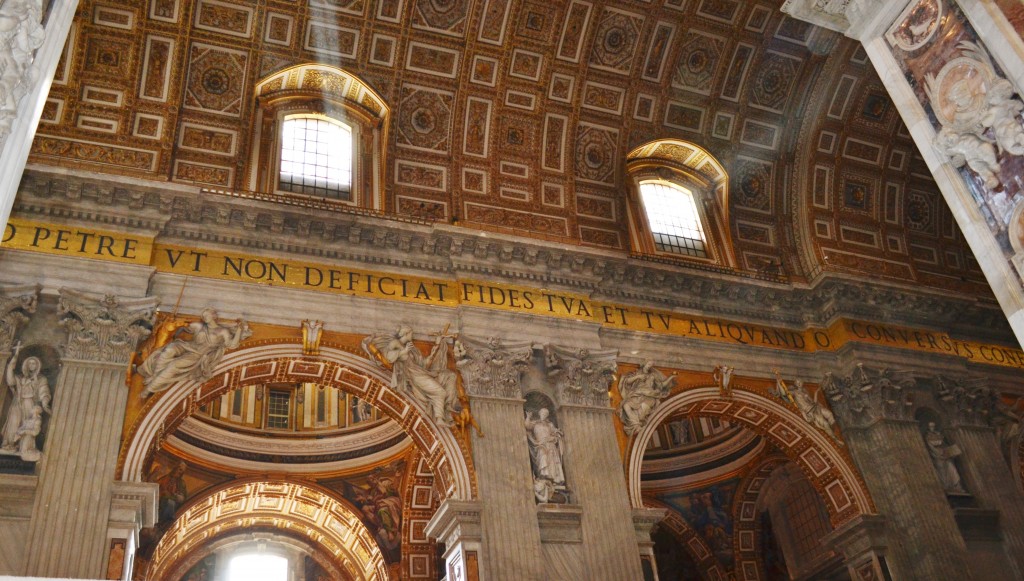
While Michelangelo is credited for the cathedral’s architecture, Bernini was its interior designer. He created the bronze canopy, the apse, the balconies, various statues (including the statue of St. Longinus) and the marble flooring.
Approaching the Nave, my eyes followed the coppered ceiling, watching the stream of light subtly appear through the windows. Detailed hallways and arches at each side are displayed with magnificent carvings. The Nave was coming into view and the dome appeared above the altar canopy. At the base of the dome are four medallions representing the saints who wrote the Four Gospels of the Bible.
Beneath the dome is the Main Altar, where only the pope recites Mass. When he is in the Vatican City, it is here where he conducts the Sunday morning mass.
The center of the Basilica is known as the Crossing and it is where the Papal Altar sits over the location of St. Peter’s tomb. Located above the tomb is the famous Dome of Michelangelo. Around the opening at the top is an inscription “To the Glory of St. Peter, Sixtus V, 1590, the fifth year of his reign.”
Looking past the elaborate altar canopy called the Baldacchino, my eyes are immediately drawn to the altar where there are two cherubs. These cherubs, holding the papal tiara and St. Peter’s keys, symbolize the authority of the Roman pontiff and seem to capture the glory of the sun.
Designed by Bernini the canopy covers the Papal Altar as well as the Tomb of St. Peter. The bronze structure was created using materials from Rome’s Pantheon and was completed in 1633. In the background, past the Baldacchino, is the Altar of the Chair, which contains the relics of a chair from which St. Peter preached. Located above the papal tiara is the symbol of the Holy Spirit, an alabaster dove that seems to illuminate as the outer light shines through. 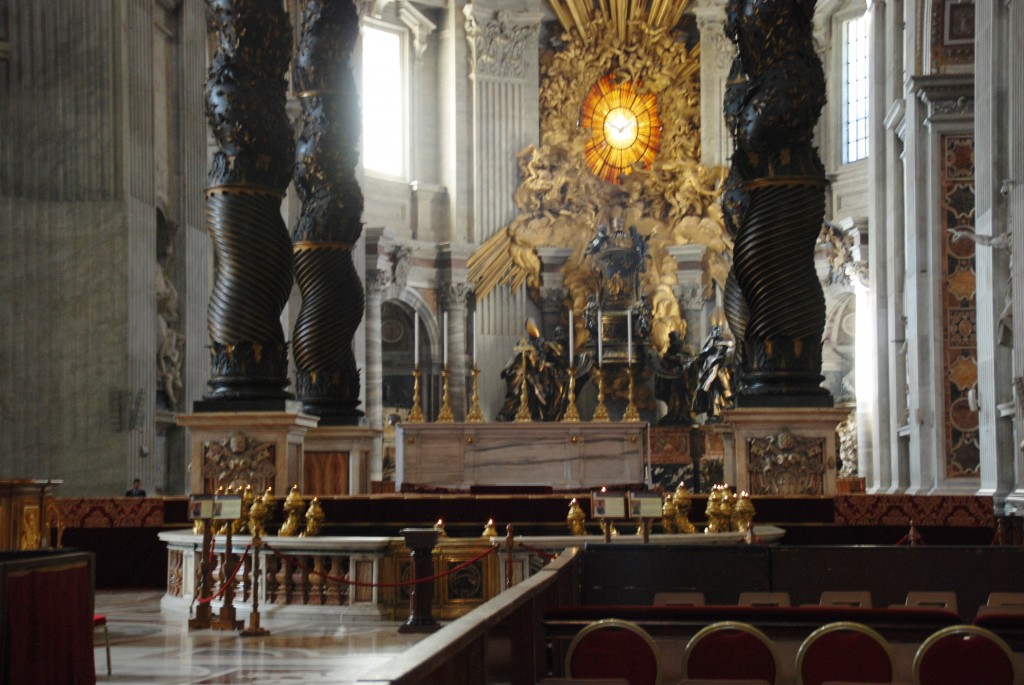
The Confessio Petri, or Tomb of St. Peter can be accessed through the banister in front of the altar and taking the stairs below. I took an excursion to see the place where St. Peter was buried and waited for our tour guide to arrive. Once we descended 23 feet below the marble floor, we reached the entrance at the bottom, where we were instructed that this was a high security area and no photos were permitted.
Of course, the most important question on everyone’s mind was, “Are these really the bones of St. Peter?” Our guide explained that the tomb of Peter had been sealed since Old St. Peter’s Church was built in 326AD. In 1940, the tomb was opened and an inscription was found on a nearby wall claiming that “Peter is here.” Archaeologists removed the bones that were wrapped in cloth and tested them to determine their age. They confirmed that they were indeed the bones dating back to the first century and are believed to be those of St. Peter, the first bishop of the Catholic church.
On the day of a pope’s funeral, thousands gather in St. Peter’s Cathedral to pay their respects, and later his coffin is carried out to the square where the eulogy is conducted. While there are several popes that have been laid to rest below the basilica, there are several shrines throughout the cathedral where the bodies of previous popes can be viewed.
The beauty of St. Peter’s continued throughout the basilica as I discovered additional treasures from some of the greatest artists of all time. While the white columns on the portico date back to the fourth century when the first church was built, many of the stones used to construct the cathedral were removed from the court houses of ancient Rome. Cupolas, statues of popes, marble floors and popes interred add to the mystery of the basilica’s possessions.
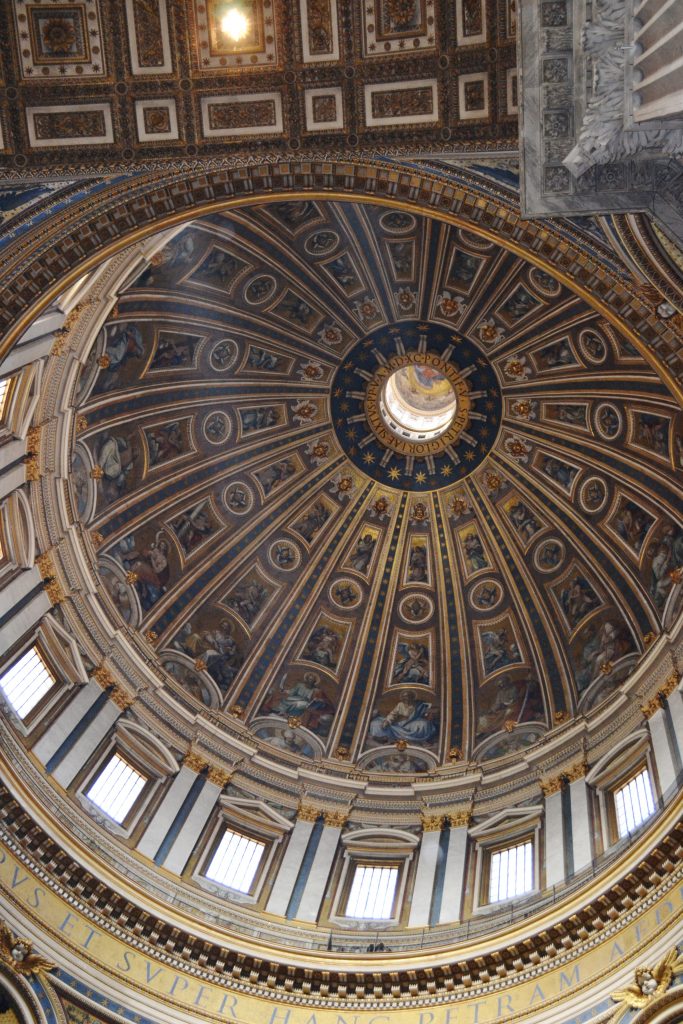
Nothing compares to the crown jewel of St. Peter’s Basilica, the Dome of Michelangelo. The largest dome in the world reaches 448 feet from the floor to the top. Sixteen slender curved panels display painted images of angels and saints while Jesus and Mary can be seen above the circular set of windows.
The Latin inscription at the base of the dome comes from the Biblical passage in Matthew 16:18 which says, “You are Peter and upon this rock I will build my church, and to you I will give the keys of the kingdom of heaven”.
The apse is located beneath the dome where a golden dove represents the Holy Spirit, glowing as the sun shines through the glass. The Throne of Peter, located below the glow of the dove, made of oak was bronzed by Bernini as a symbol of St. Peter’s authority.
Not only was St. Peter buried within the walls of St. Peter’s Cathedral, this is also the site of his crucifixion. To the left of the apse, across from the main altar is a painting which, according to tradition) represents St. Peters’ crucifixion. While Peter was preaching in Rome, he gained the attention of the current reigning emperor Nero, who hated Christians. Nero imprisoned Peter and made a spectacle of his death. It is said that Peter refused to be crucified in the manner of Christ and insisted that he should be nailed to the cross upside down.
Raphael’s famous painting of The Transfiguration is around the corner telling the story of Jesus’ ascension into heaven after having been crucified, buried and then rising from the dead. The Renaissance artist’s oil is located above one of the altars on the other side of the statue of St. Andrew. The magnificent layers of blue in the sky welcome Jesus as he rises from the Earth to his eternal home in heaven and it is exactly how I had imagined it.
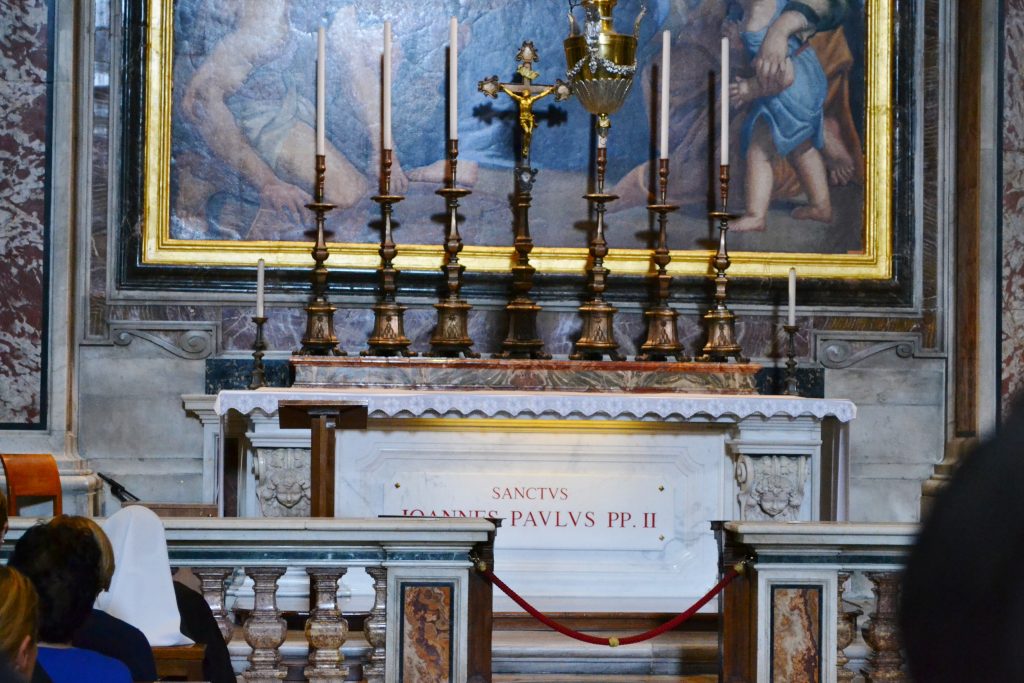
There is a crowd surrounding the Pieta as I arrived and I decided to visit the tomb of Pope John Paul II who is close by. My grandparents were Catholic, so I remembered how much they respected him and were proud that he was Polish. I also remember when he survived an assassination attempt in 1981 and the extensive media coverage during his death in 2005. And since I happened to be visiting the weekend of his canonization, it only seemed appropriate that I pay my respects.
St. John Paul II was laid to rest below the painting of St. Sebastian who was able to escape the assassination attempts on his life by the Romans. It is said that Sebastian was John Paul’s favorite saint.
I finally reach Michelangelo’s Pieta (pity), housed behind bulletproof glass, and gazing upon its rich detail, it is clear to see the sculptor’s influence on the artistic community of the Renaissance Era. This statue of Mary shows her holding Jesus after he was taken from the cross. Considered the most famous of all of Michelangelo’s works, he completed it at the age of 24. The soft edges, deep folds and expression on Mary’s face graciously exemplify the perfection in his work.
St. Peter’s Cathedral showcases the beautiful artistic treasures of Renaissance art. It displays the wealth and importance of the Catholic Church with its billions of followers. From the first Pope, St. Peter to St. Francis today, Catholicism remains a key spiritual denomination to many believers in Jesus Christ over many years.
Have you experienced the beauty of St. Peter’s Cathedral? What did you admire the most? I would love to hear about your visit and would be happy if you would include any additional information or suggestions regarding a visit to St. Peter’s in the comments section below. Many thanks for reading about my tour of St. Peter’s Cathedral and wishing you many Happy Travels!
What to See and What to Do:
Purchase a Ticket for the Hop On/Hop Off Bus
St. Peter’s Basilica
Piazza San Pietro
00120 Citta del Vaticano, Vatican City, Italy
Telephone: +39 06 6988 3731
- Admission Fee: Free admission with an additional charge to visit the dome. Dome fees: elevator to the terrace level and climb up the 320 steps for 10 Euros or climb up the 551 steps for 8 Euros.
- Buses/Trains Info: Buses 40, 44, 84, 780 and 810; Metro station: Colosseo: Line B
- Hours: Daily from 8:00AM to 5:00PM from October 1 to March 31 and daily from 8:00AM to 6:00PM from April 1st to September 30.
- Amenities: Audioguides and Radioguides are available.
- Guided Tours and Audio Guides: Audioguides are provided in Italian, German, Polish, Spanish, French and English, while Radioguides are also available.
- Scenic View: Spectacular view from St. Peter’s dome
- Length of the Tour: 2 – 3 hours
- Tips for Your Visit: Dress appropriately ensuring that your shoulders and knees are covered (i.e., no tank tops and wear long shorts or capri pants). Remain as quiet as possible.
Where to Stay:
Courtyard Rome Central Park
Via Giuseppe Mosacti 7
Rome 01168 Italy
Telephone: +39 06 355741
Where to Eat:
Pastasciutta
Via delle Grazie 5
00193, Rome Italy
Telephone: +39 333 650 3758
The first day I tried this restaurant, I ordered the Pappardelle alla Carbonara. I had been waiting for the opportunity to try this Italian dish and fell in love!
My second day of visiting, I tried the Pappardelle ai funghi (mushrooms). Excellent for the price!
What to Eat:
- Artichokes: steamed or fried
- Cacio e Pepe: Cacio is a type of cheese from Rome’s countryside made from sheep’s milk. The dish is served over pasta and seasoned by black pepper.
- Carbonara: creamy white pasta served with pancetta and noodles
- Gelato: You have not had gelato until you have had it in Rome!
- Maritozzi is a popular breakfast pastry with chocolate chips served with espresso. Some maritozzi are filled with cream as well.
- Pecorino Romano cheese
- Pizza al Taglio is Rome’s answer to pizza with red sauce, meats, vegetables and cheeses. I also love the Italian margarita pizza with red sauce, mozzarella cheese and topped with basil.
- Porcetta: Pork wrapped around herbs and roasted on a spit
- Saltimbocca is a dish made with veal and sage wrapped in prosciutto, cooked in white wine and butter.
- Suppli is considered an Italian snack made of rice and meat with tomato sauce and filled with mozzarella cheese and then deep-fried. It reminds me of arancini in the US.
Where to Drink:
Il Goccetto (for wine)
Via dei Banchi Vecchi, 14
00186, Roma RM, Italy
Telephone: +39 06 9944 8583
Terrazza Borromini
Via di Santa Maria dell’Anima, 30A
00186 Roma RM, Italy
Telephone: +39 06 6821 5459
While the drinks are pricey, it will be worth the cost for the fabulous views.
What to Read:
- Imperium, by Robert Harris
- Roma, by Steven Saylor
- SPQR, by Mary Beard
- The Twelve Caesars, by Robert Grave
Photo Guide for Rome:
- Campo de’ Fiori for photos of the market
- The Colosseum
- Monti for upscale boutiques, restaurants and vintage stores
- The Pincio Terrace overlooking Piazza del Popolo in northern Rome
- The top of St. Peter’s Basilica
- Trastevere neighborhood for scenic alleyways, artisan workshops, the piazza at sunset, and tiny boutiques. Find the corner of Vicolo delle Torro off of Via della Lungaretta for photo-worthy pics.
- Trevi Fountain
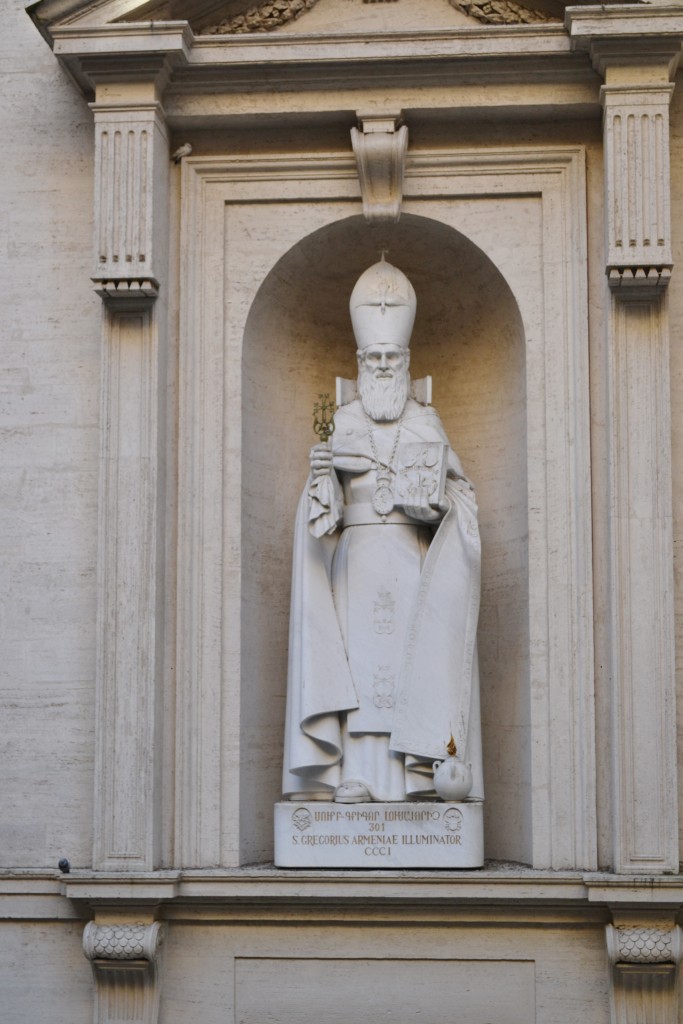
White Marble Saints
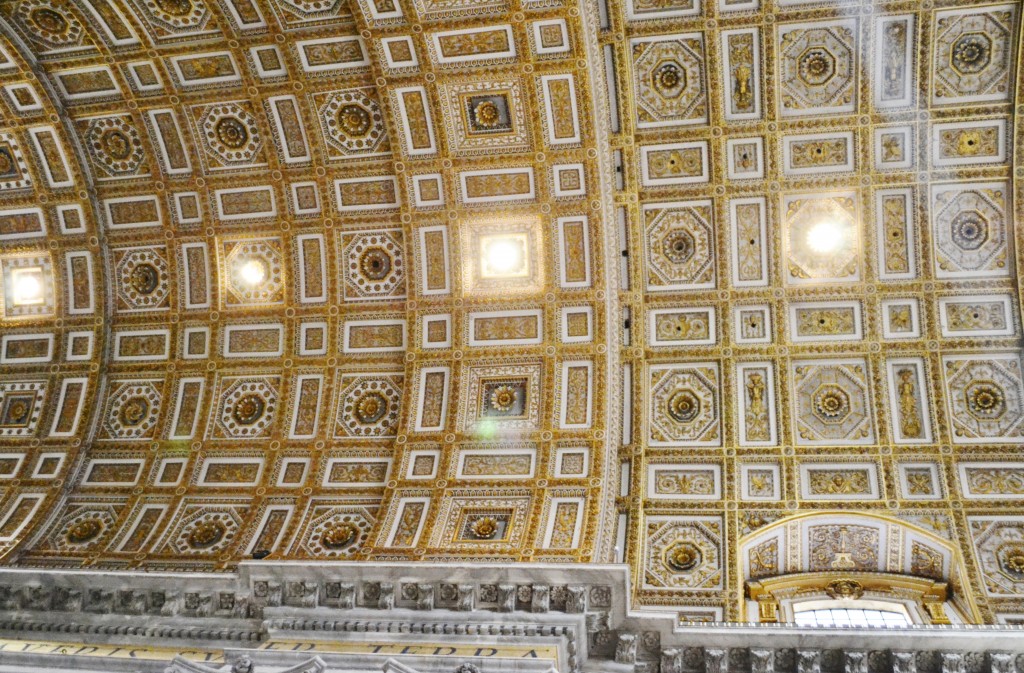
The Ceiling of St. Peter’s Basilica

A Circular Roundel in St. Peter’s Basilica
